How To Waterproof Cowboy Boots – 5 Best Ways
Are you to wear your cowboy boots in the rain because they can get ruined? Let’s see…
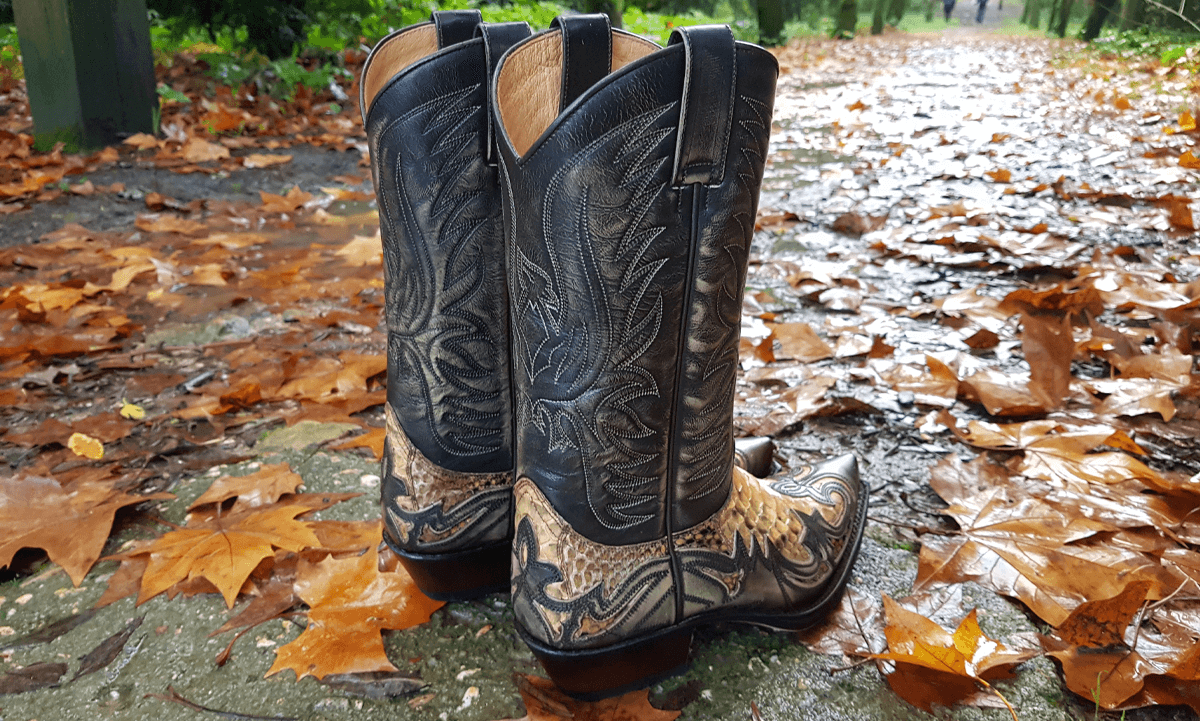
Cowboy boots are typically made using natural leather, which is very close to water resistant. Meaning they can handle light showers and water splashes without damaging the boots.
I said it’s “water-resistant.” NOT waterproof.
Leather is a porous material and it can absorb water and weaken the leather fibers if they are exposed in wet conditions for a long time.
Since leather is naturally porous, it can gradually soak up moisture, leading to changes in its shape, color, and even the potential growth of mildew if it isn’t dried enough and maintained. This is why you must waterproof cowboy boots.
The quality of craftsmanship is yet another factor in deciding your boot’s resistance to water. This is because well-constructed boots tend to have a tightly stuck seam, which prevents water from entering.
Are cowboy boots waterproof? While cowboy boots can handle a bit of water exposure, they’re not originally built to be completely waterproof.
In this post, I’ll guide you through the most effective methods to enhance your boot’s water resistance and make it as close as possible to waterproof.
Why should you waterproof Cowboy Boots?
You might think that cowboy boots are built for challenging trails and there’s no point in safeguarding them.
In my opinion, a pair of good cowboy boots is an investment. Protecting them ensures that they remain in good condition over the long term.
Although some leather cowboy boots are close to water resistant, even the finest pairs could get wrinkled, cracked, or discolored if they are repeatedly exposed to moisture.
1. Water ruins leather over time
When water droplets make contact or if the leather gets soaked in water, there’s not much immediate action, especially if the leather has been treated with polish or waterproofing.
However, when water sits on the boot’s surface for an extended period or if the boot remains submerged in water, it eventually starts to seep into the leather.
Over time, moisture that has infiltrated into the leather mix with the oil molecules that are naturally present in the leather. As the water molecules begin to evaporate, the oil molecules follow suit, evaporating along with them.
You might have noticed how boots end up looking drier than their usual sleek selves when they are exposed to water.
Well, that’s because the natural oils that usually give the leather its fresh, shiny appearance tend to evaporate alongside the water, leaving the leather with a somewhat flaky texture.
2. Water ruins suede
Suede also reacts to water exposure in a way that can be quite similar to leather.
But, there’s an additional aspect to consider.
In suede, the fine fibers can turn brittle and stiff when it’s exposed to water for an extended period. This is much like your own long hair becoming more prone to breakage if it isn’t properly cared after thorough soaking.
When these suede fibers become stiff, they have a tendency to shed from your cowboy boots. As a result, your boots lose their aesthetic charm and also their overall quality and durability.
3. Avoid unpleasant smells
This is a common issue that affects all kinds of shoes. When the interior of your shoes stays damp for a long time, it creates a perfect environment for microbes to thrive. These little critters feed on your sweat and any dirt that may be inside your shoes.
Over time, this can lead to an unpleasant odor emanating from your boots, and whether you wear them with or without socks, your feet may also end up smelling less than pleasant.
4. Wet boots become a magnet for mold.
Have you ever noticed any white, ash-colored, or black mold cropping up on your boots? Chances are, it’s mold!
The sight of mold suggests that your boots are playing host to fungi. Fungi thrive in damp environments, and it’s a clear sign that your boots have been exposed to moisture.
Fungi not only indicate moisture in your boots, but they also signal that your boots are likely in need of a thorough cleaning.
5 Best ways to waterproof Cowboy Boots
Whether you’re rocking leather, suede, or any other boot variety, it’s crucial to shield them from prolonged moisture exposure.
By taking proper care of your boots, you can avoid expensive repairs and increase your boot’s lifespan.
All of this just for a few bucks and a little time.
1. Use Mink oil
Mink oil is a natural product that’s made from the fatty layer found beneath the skin of minks, which are cute little creatures native to North America and parts of Europe.
People love using mink oil for all sorts of things, but its main gig is taking care of leather items like boots, belts, wallets, and shoes.
So, what makes mink oil such a hit in the leather care world?
First off, it’s like a spa day for your leather goods. Mink oil is packed with natural fats and oils that dive right into the leather and keep it soft and flexible. No more dealing with that annoying dry, brittle leather situation.
But that’s not all! Mink oil is also your leather’s knight in shining armor when it comes to dealing with rain and puddles. When you rub some mink oil on your leather stuff, it puts up a shield that tells water to hit the road. So, your leather stays dry and in tip-top shape.
Applying mink oil is a super simple process. First, clean and then all you got to do is thoroughly apply the oil around the entire boot.
But the downside of using milk oil on your boots is it would darken your boots significantly and it’s never going to return to the original color.
2. Sno-Seal
Sno-Seal is a beeswax-based waterproofing product that has been trusted by outdoors enthusiasts for decades. It provides a protective barrier on leather, making it highly resistant to water and moisture while still allowing the leather to breathe.
This has been a product that I’ve used for many years, ever since I was doing a part-time job at a golf course during my college days. A lot of moisture from those early mornings on the golf course
would seep into my leather boots and the leather would deteriorate over time.
Step 1: Before applying Sno-seal, heat your boots so the leather opens up the pores and allows the seal to penetrate into the pores. You could use a heat gun, hair dryer, or even put your boots inside a low-temperature oven. Also, make sure that the boots are clean.
Step 2: Use a clean cloth or an applicator brush to apply Sno-Seal to your boots evenly. Make sure to get into every nook and cranny, including seams and stitching. Apply a generous amount, but don’t overdo it; a little goes a long way.
Step 3: Heat your boots once again after the first coat and apply another coat. As of the number of coats, it really depends on your pair of boots. Continue to repeat this process until the seal no longer seeps into the leather.
Step 4: Once the Sno-Seal has dried and set, use a clean, dry cloth to buff the boots. This will remove any excess wax and give them a polished look.
Make sure to apply the sno-seal anywhere on the boots where water could penetrate. So it is perfectly fine to put it on the welts and stitches.
3. Seam Sealers
When you’re breaking in a new pair of boots, the seams are the usual suspects for moisture sneaking in.
So, here’s a tip: give them an extra layer of protection with a seam sealer like Gear Aid Seam Grip.
These urethane-based adhesives are like the unsung heroes of waterproofing. They not only keep the water out but also shore up any weak spots, all while staying flexible.
Just follow the instructions on the package and make sure each layer gets a good, thorough dry before you add more product. Your boots will thank you for it!
4. Waterproofing sprays
Spray-on treatments like Kiwi’s silicone-based Boot Waterproofer are quick and easy boot waterproofing solutions. But here’s the deal: they might not be the toughest option.
For boots clocking in some serious work hours, you’ll want to befriend your waterproofing spray more often – we’re talking every couple of weeks or whenever your boots have a wet adventure.
So, find yourself a spot outdoors or with good ventilation, and get ready to give your boots some love. Start by spraying 1-2 even coats all over your boots. Don’t rush this part; let each layer dry completely before you move on. Your boots will thank you for this extra dose of protection against the elements.
5. WD-40
WD-40 is a common DIY hack to waterproof your boots. But it’s important to note that WD-40 was not designed for this purpose and it can affect the appearance of your boots.
While it may offer some degree of water repellency, it’s not as effective or long-lasting as dedicated waterproofing products.
FAQ’s?
Can I use Vaseline to waterproof boots?
Yes, you can use Vaseline to provide a basic level of waterproofing for your boots. Vaseline creates a temporary water-resistant barrier on the surface of your boots which helps repel water.
It’s not as effective or long-lasting as dedicated waterproofing products.
When Should I Waterproof Boots?
The optimal timing for waterproofing your boots is in warm and dry conditions, typically in late summer or early fall.
This ensures they are effectively sealed before encountering more humid weather. Nonetheless, in the event of unexpected wet conditions, waterproofing your boots during the rainy season is a better choice than allowing them to soak and leave your feet vulnerable to dampness.
What is the best method for waterproofing cowboy boots?
I have been using sno-seal on my cowboy boots for a very long time and it works best for me. However, you could test the other methods I’ve mentioned above in a smaller area to see if it works well.
How often should I use mink oil?
If you’re sticking to mink oil as your go-to conditioner, you can generously apply it every six months. But if you’re planning to add wax or some other sealant over the oil, then a once or twice-a-year application should do the trick just fine.
Your boots will thank you for the love and care!

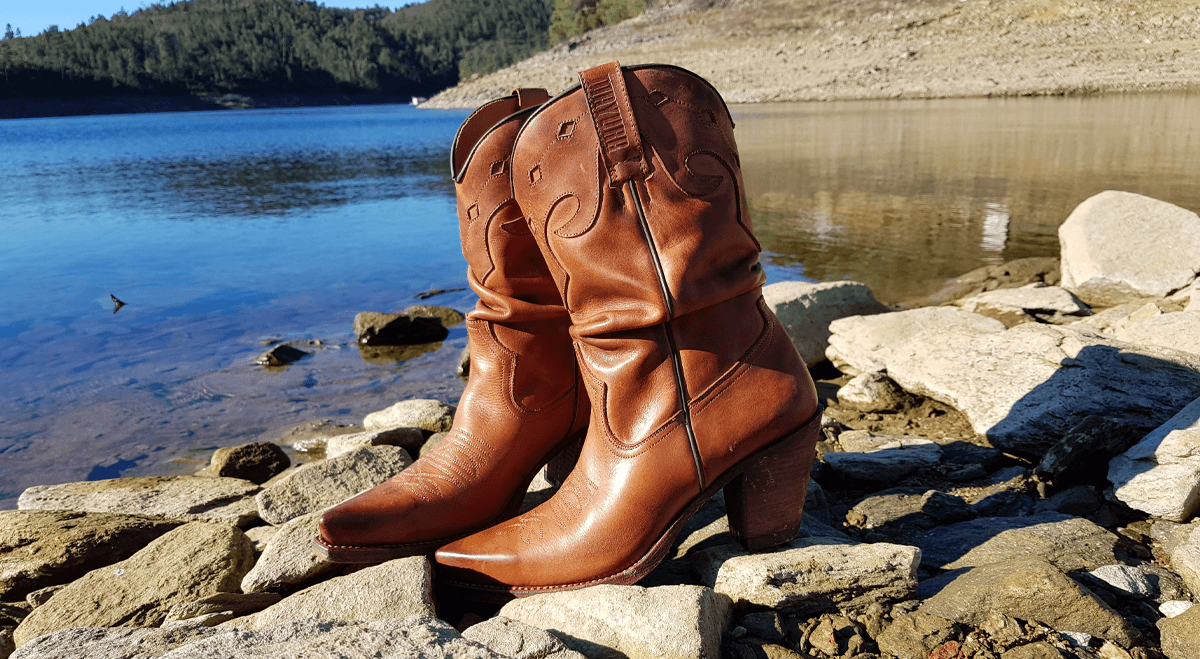
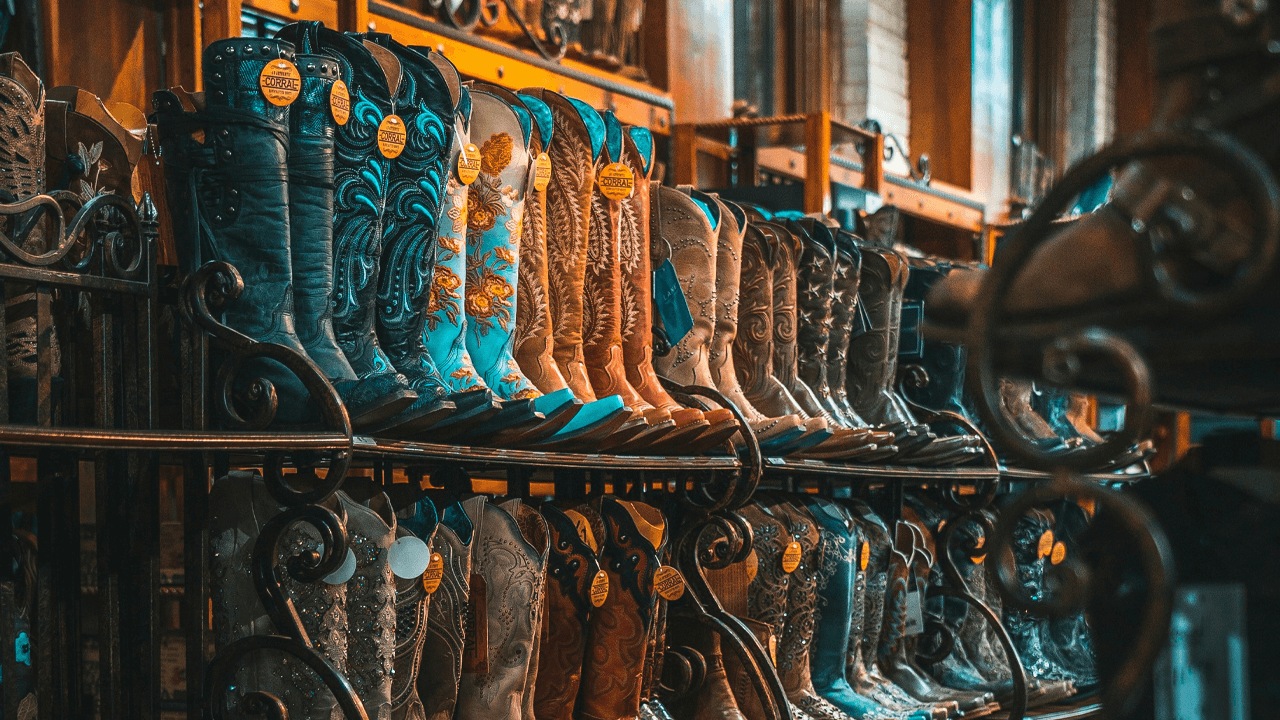

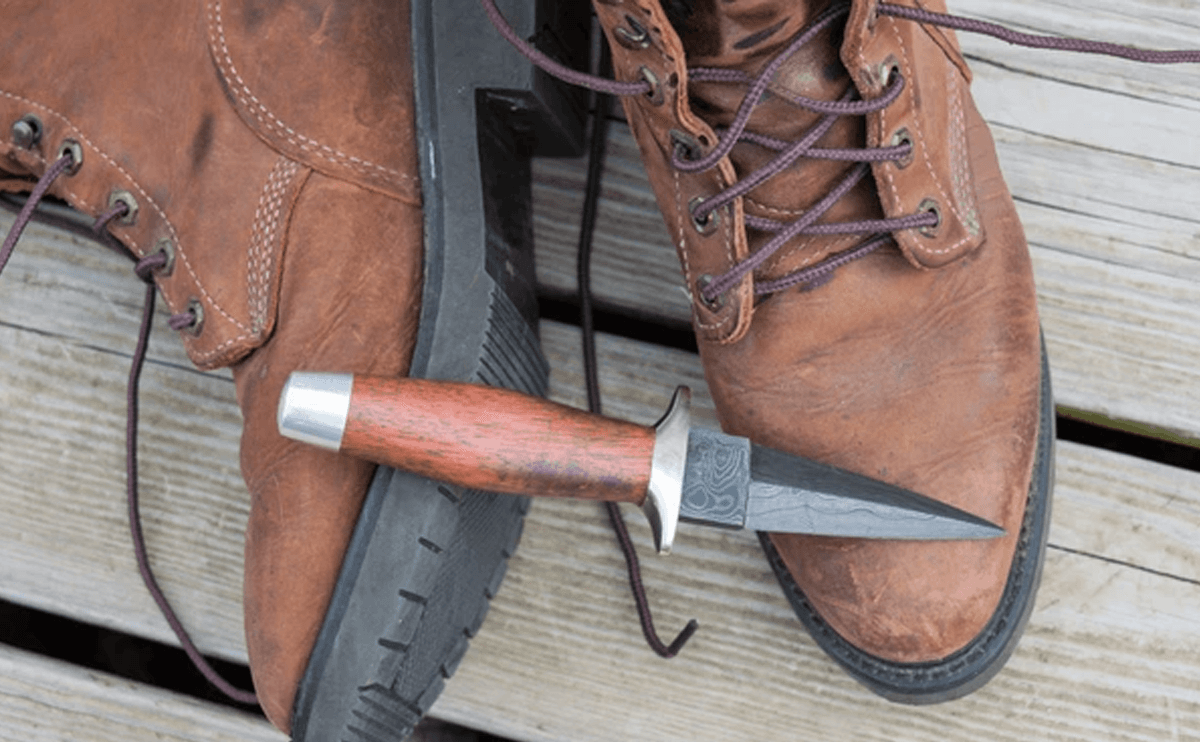

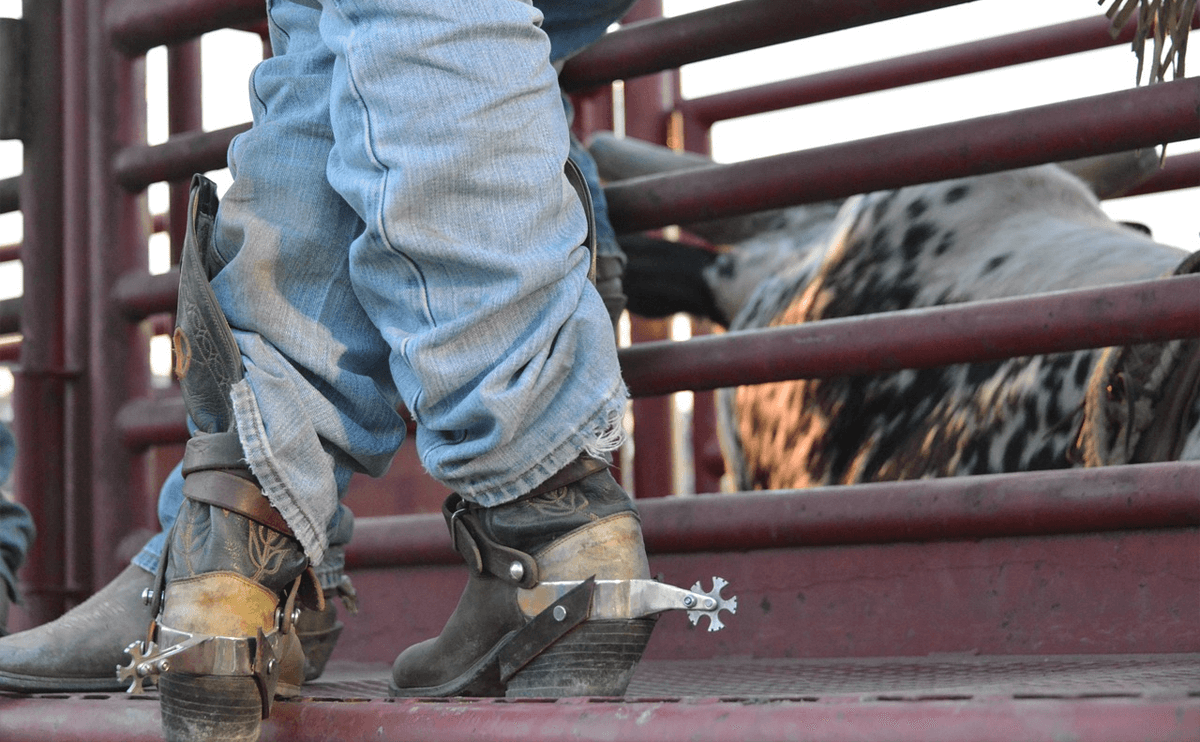
Shall we exchange links? My website https://zetds.seychellesyoga.com/jml
Content for your website https://zetds.seychellesyoga.com/info
Web Development Wizards https://zetds.seychellesyoga.com/info
Can provide a link mass to your website https://zetds.seychellesyoga.com/info
Your site’s position in the search results https://zetds.seychellesyoga.com/info
Free analysis of your website https://zetds.seychellesyoga.com/info
Content for your website https://zetds.seychellesyoga.com/info
Web Development Wizards https://zetds.seychellesyoga.com/info
Can provide a link mass to your website https://zetds.seychellesyoga.com/info
Your site’s position in the search results https://zetds.seychellesyoga.com/info
Free analysis of your website https://zetds.seychellesyoga.com/info
SEO Optimizers Team https://zetds.seychellesyoga.com/info
I offer mutually beneficial cooperation https://zetds.seychellesyoga.com/info
Cool website. There is a suggestion https://zetds.seychellesyoga.com/info
I really liked your site. Do you mind https://zetds.seychellesyoga.com/info
Here’s what I can offer for the near future https://zetds.seychellesyoga.com/info
You will definitely like it https://zetds.seychellesyoga.com/info
Content for your website https://ztd.bardou.online/adm
Web Development Wizards https://ztd.bardou.online/adm
Can provide a link mass to your website https://ztd.bardou.online/adm
Free analysis of your website https://ztd.bardou.online/adm
SEO Optimizers Team https://ztd.bardou.online/adm
I offer mutually beneficial cooperation https://ztd.bardou.online/adm
Cool website. There is a suggestion https://ztd.bardou.online/adm
I really liked your site. Do you mind https://ztd.bardou.online/adm
Here’s what I can offer for the near future https://ztd.bardou.online/adm
Content for your website https://ztd.bardou.online/adm
Web Development Wizards https://ztd.bardou.online/adm
Can provide a link mass to your website https://ztd.bardou.online/adm
Your site’s position in the search results https://ztd.bardou.online/adm
Free analysis of your website https://ztd.bardou.online/adm
SEO Optimizers Team https://ztd.bardou.online/adm
I offer mutually beneficial cooperation https://ztd.bardou.online/adm
Cool website. There is a suggestion https://ztd.bardou.online/adm
Content for your website http://myngirls.online/
Web Development Wizards http://myngirls.online/
Can provide a link mass to your website http://myngirls.online/
Your site’s position in the search results http://myngirls.online/
Free analysis of your website http://myngirls.online/
SEO Optimizers Team http://myngirls.online/
I offer mutually beneficial cooperation http://myngirls.online/
Web Development Wizards http://fertus.shop/info/
Can provide a link mass to your website http://fertus.shop/info/
Your site’s position in the search results http://fertus.shop/info/
Free analysis of your website http://fertus.shop/info/
SEO Optimizers Team http://fertus.shop/info/
Outstanding feature
I offer mutually beneficial cooperation http://fertus.shop/info/
Cool website. There is a suggestion http://fertus.shop/info/
I really liked your site. Do you mind http://fertus.shop/info/
Here’s what I can offer for the near future http://fertus.shop/info/
You will definitely like it http://fertus.shop/info/
The best prices from the best providers http://fertus.shop/info/
Additional earnings on your website http://fertus.shop/info/
Analytics of your website http://fertus.shop/info/
I would like to post an article http://fertus.shop/info/
How to contact the administrator on this issue http://fertus.shop/info/
Shall we exchange links? My website http://fertus.shop/info/
The offer is still valid. Details http://fertus.shop/info/
We offer cooperation on SEO optimization http://fertus.shop/info/
Content for your website http://fertus.shop/info/
Web Development Wizards http://fertus.shop/info/
Your site’s position in the search results http://fertus.shop/info/
Content for your website http://fertus.shop/info/
Content for your website http://fertus.shop/info/
Can provide a link mass to your website http://fertus.shop/info/
Free analysis of your website http://fertus.shop/info/
SEO Optimizers Team http://fertus.shop/info/